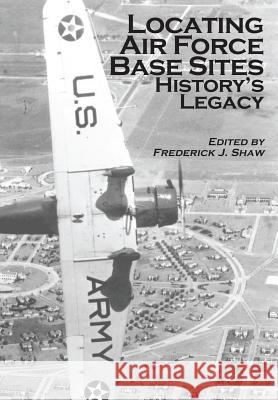Locating Air Force Base Sites: History's Legacy » książka
Locating Air Force Base Sites: History's Legacy
ISBN-13: 9781477539996 / Angielski / Miękka / 2012 / 226 str.
Over the past twelve years, the base infrastructure of the United States Air Force (USAF) has shrunk rapidly to accommodate force downsizing engendered by the ending of the Cold War. Still more radical changes are necessary to efficiently support the agile forces required to wage the "Global War on Terrorism." Historically, the ebb, flow, and utilization of Air Force installations are interconnected to changes in the size, composition, and capabilities of major flying and nonflying organizations. As a result, the number of USAF installations has fluctuated according to the complex interaction of the perceived global threat, technology, strategy, tactics, and projected force structure. This study describes military, technical, economic, and political reasoning that has influenced the location, or basing, of major flying and nonflying units in the continental United States, excluding Alaska, between 1907 and 2003. Specifically, it deals with the basing of bomber, fighter, airlift and missile units, training installations, logistic centers, and product centers. Locating flying and nonflying organizations involves assigning them to installations, usually Air Force bases that are compatible with their missions. So closely related is the expansion, contraction, and relocation of USAF force structure to the utilization of base infrastructure that the two subjects must necessarily be considered together. This volume, a preliminary, groundbreaking effort planned and produced within a prescribed period of time, is intended as a reference work offering historical perspective on current basing issues.
Zawartość książki może nie spełniać oczekiwań – reklamacje nie obejmują treści, która mogła nie być redakcyjnie ani merytorycznie opracowana.











